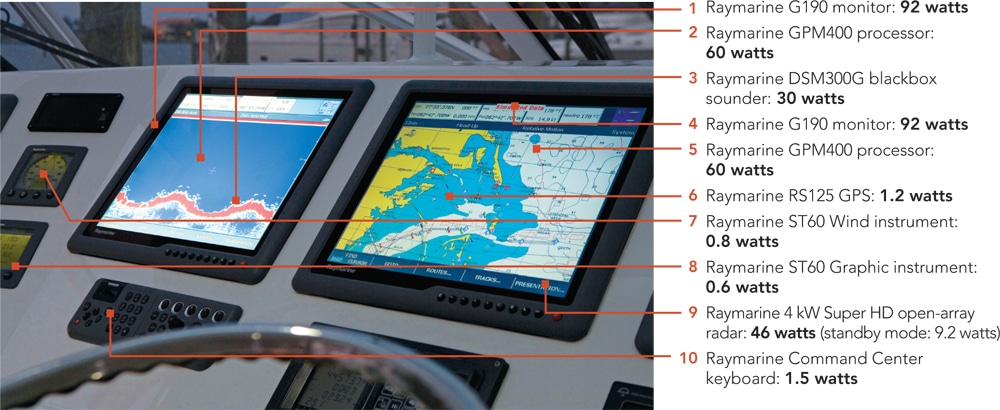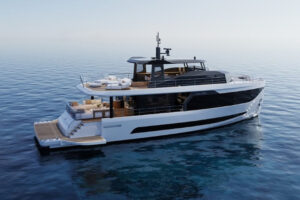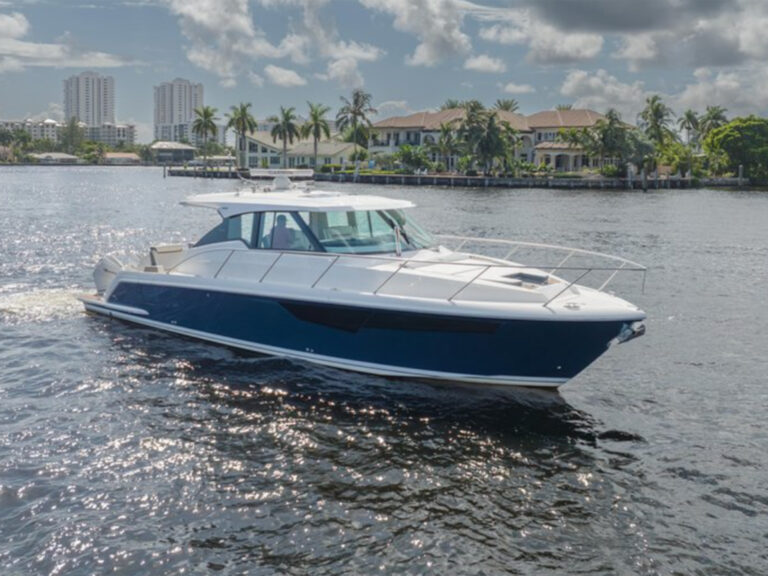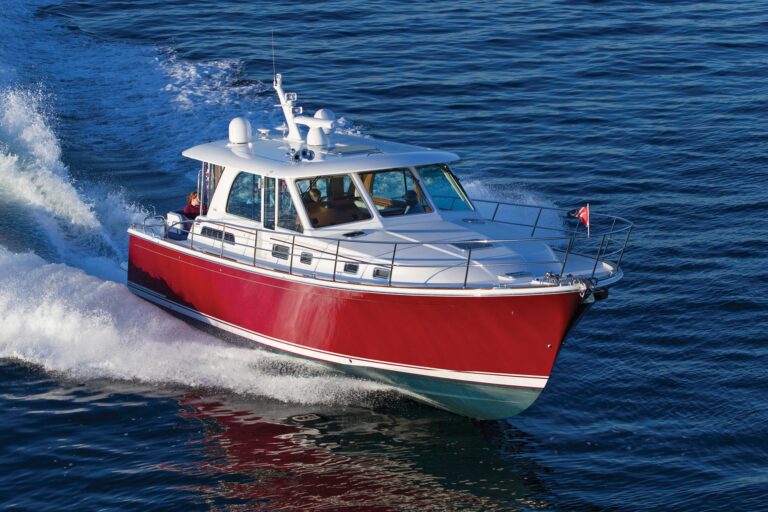
Powering Your Helm
The helms of boats, much like their owners’ offices and homes, have become clearinghouses for far more digital data than any two eyes can digest on a per-second basis. Huge screens carry split views of radars, fishfinders, chart plotting and the like, while engine and ship’s systems monitoring flickers in the peripheral, making the user aware of developments in real time, at a glance.
But not all of these helms are on the latest boats. In fact, electronics upgrades have been seen as a suitable consolation prize to owners looking for a new boat, who took stock in their holdings and decided to wait and see what spring would bring. The common result: A whole new helm array, featuring equipment loaded with enough processing power to challenge Garry Kasparov. A new helm opens a whole world of possibilities for cruising — whether it is a chart plotter that synchs with your tablet computer for remote route-planning capabilities, or the addition of a radar or night-vision system that stretches the hours and conditions in which you can be cruising comfortably.
“We have all sorts of different accessories and a lot of them are behind the scenes and plug into their main displays on the helm,” says Jim McGowan, a marketing manager at Raymarine (www.raymarine.com). “But you never even see them and people don’t give them enough consideration when they start adding this stuff to the boat.” While the upgrading process is exciting, it’s important to stop and ask: Is the boat’s electrical system up to the task of driving all this equipment?
While most boats should be able to send enough juice from the battery bank to the helm, it’s critical that the wiring leading to the helm is up to the task. Make sure your electronics installer reviews the existing wiring with electronics manufacturers’ specifications and boat-wiring standards put out by the National Marine Electronics Association (www.nmea.org) or the American Boat and Yacht Council (www.abycinc.org). The problems that can arise when these specs are ignored become the sorts of gremlins that may stump technicians (not reducing their hourly rate) and taunt you as you push the power button on your new unit in vain.
While many helm arrays are on a 12-volt DC system, the rise of 24-volt DC makes sense. Why? A 24-volt system allows the amperage to be half that of a 12-volt system for the same wattage. So 12-volt systems use smaller-diameter wires to deliver the juice, saving weight and shrinking the size of holes in bulkheads through which wires pass. That thinner wire contains less copper, making it less expensive.
Stands to reason, in a world of finite resources and seemingly unlimited growth, that we would develop smarter ways of doing the things we love. While not all marine electronics can run on 24-volt DC now, it is becoming more and more common for devices to have internal power management allowing them to run on anything from nine to 30 volts.
Marine electronics make up a small piece of a much larger electronics pie, but one that can capitalize on the developments of other electronic-industry segments. You may have noticed that mobile phones and netbooks — those miniature laptop computers — are becoming faster, brighter, increasingly powerful and more useful. If you’ve ever had one of these devices with a battery problem, you know that battery life equals usefulness. So these devices use powerful processors that draw minimal juice.
“The problem is customers want more through-put or more instructions per second — in other words, they want faster processors and faster machines at lower power consumption,” says Eric Kunz, senior product manager at Furuno USA (www.furunousa.com). “We’re looking at things like newer processing cores. For example, this year Intel and AMD came out with newer CPU architectures with higher levels of integration. The net effect is decreased power consumption while simultaneously increasing performance. Look for these newer-style architectures that marine electronics manufacturers borrow from netbook, tablet and laptop designs for the consumer market, where battery limitations and power consumption are critical factors.”
Reduced power needs with better performance sounds like a formula for a great future. Less draw on a boat’s batteries means increased battery life and reduced genset fuel consumption, both factors that will pay long-term dividends for the owner both financially and environmentally. And it doesn’t hurt to begin monitoring those levels now.
“CZone from BEP uses digital switching — it’s a CANbus system — and it allows us to monitor any AC or DC circuit on the boat and also monitor tank levels and fuel usage, and switch components on or off,” says Dennis Hogan, product manager with Simrad (www.simrad-yachting.com). “But it also measures the load of each circuit, and whether it’s powered or not powered, it will display the load on the circuit.” CZone works with Simrad’s NSE multifunction displays to create customized pages that let users set the components they want grouped together, and control them that way, or individually.
CZone works over the NMEA 2000 protocol. While digital switching has been around a while, it’s a brilliant fit when used hand in hand with monitoring of numerous electrical components (one way to describe a helm setup). Knowing the power f low of each unit can tip you off to potential problems in the system or weak points in the connections and wiring, and allow you to head off problems before they begin to interfere with your time on the water.

What kind of problems can arise when power flow to the helm is disrupted? “A microprocessor-based electronic device must protect itself from low-voltage conditions in order to prevent improper functions,” says a marine engineer from Garmin (www.garmin.com). “A microprocessor system has a system monitor to ensure it doesn’t operate when the voltage is too low. For example, devices with memory (i.e. waypoints) could be in the process of updating that memory when power fails. In this example, an important waypoint could be lost, or even worse, saved incorrectly. As the power drops, ‘keep alive’ circuits and software algorithms can be used to prevent the loss of data. These circuits are rigorously tested to minimize the chance of any data loss.”
Valuable data should be backed up regularly to protect against permanent loss. The manufacturer of your unit will be able to tell you the best way to go about it, but, even if you need to buy a peripheral device, it’s a worthwhile endeavor.
Today’s helm electronics put new technology right where boat owners want it, with capabilities that astonish and amaze. But they can’t perform without a smooth, uninterrupted flow of electricity. Pay attention to the details during installs, upgrades and repairs, and your helm will work when you need it.









